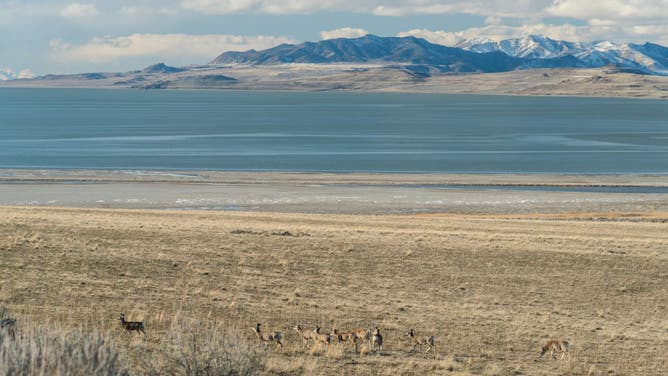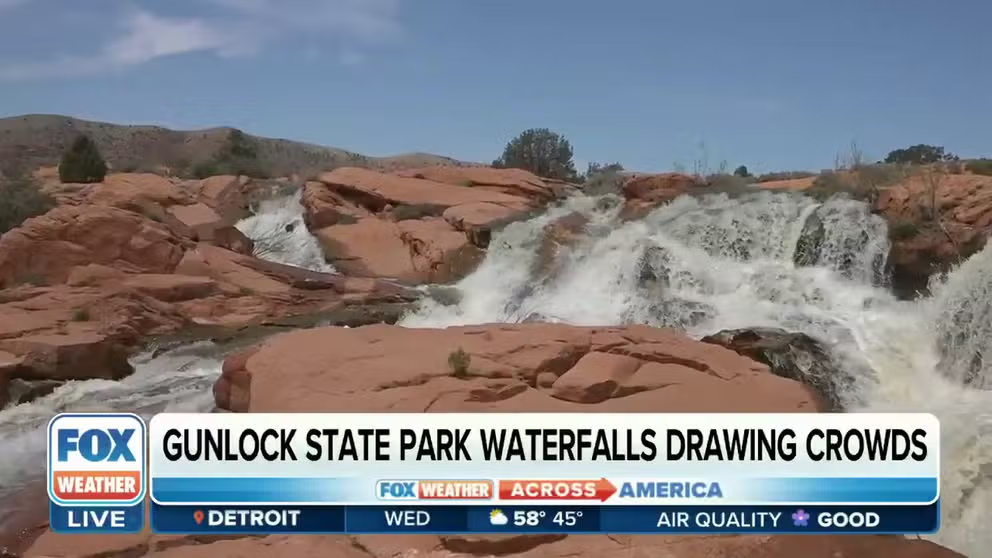There are mixed signals for Utah’s water future after historic snowfall
Researchers at Brigham Young University continue to warn the ecosystem surrounding the Great Salt Lake is in danger of collapsing due to drought and a lack of conservation efforts.
Snowmelt leads to spectacular waterfall display at Utah's Gunlock State Park
Melting snowpack has created waterfalls at Gunlock State Park in Utah with water expected to flow higher as temperatures continue warming. Fox News multimedia reporter Ashley Soriano on how the waterfalls draw in the crowds.
SALT LAKE CITY - The state of Utah sits at a complicated crossroads with the governor recently declaring a state of emergency due to flooding, but researchers at Brigham Young University warn of the collapse of the ecosystem surrounding the Great Salt Lake.
Communities in Utah saw a record snowpack over the winter, with some areas racking up over 200 percent of average precipitation.
With the coming of spring, rising temperatures have caused the snow to melt at an astonishing rate causing runoff problems around the state.
Flooding, landslides and debris flows have damaged infrastructure and forced dozens of homes to be evacuated due to life-threatening conditions.
The Utah Department of Natural Resources estimated the snowpack peaked at 30 inches of water equivalent compared to just 12 inches last year.
The now-liquid water is helping lakes and reservoirs rise, but the extent of rejuvenation is still up for debate at the country’s largest saltwater lake.
SONIC BOOM: HEAR THE SOUNDS OF A METEOR BREAKING UP OVER UTAH

Winter snowpack compared to average year
(FOX Weather)
Utah DNR reports the Great Salt Lake’s water elevation was at 4,191.7 ft. – a level still close to historic lows.
Experts believe the low water levels were created due to a megadrought and a dramatic increase in human usage.
The plummeting water levels triggered researchers at Brigham Young University to issue a staunch warning, alerting of the potential collapse of the Great Salt Lake’s importation ecosystem.
Before the onslaught of rain and snow to finish the 2022-23 winter, BYU researchers reported the lake had lost 73 percent of its water and 60 percent of its surface area
2 DEAD, MORE THAN A DOZEN RESCUED AFTER CANYON FLASH FLOODING CATCHES HIKERS OFF GUARD IN UTAH

USA, Utah, Antelope Island, State Park, Great Salt Lake, Great Basin, herd of Mule deer
(Photo by: Prisma by Dukas/Universal Images Group via Getty Images / Getty Images)
The loss of an important resource could lead to the destruction of millions of animals’ habitats, the ending of important jobs and billions of dollars in economic impacts.
"We recommend setting an emergency streamflow requirement of at least 2.5 million acre-feet per year until the lake reaches its minimum healthy elevation of 4,198 feet," BYU researchers wrote in the January report.
In addition to the rainfall’s natural recharge, experts called upon government entities to enact legislation to reduce consumption and increase water conservation.
A wet period, similar to the 1980s, would be needed to help refill the Great Salt Lake to appreciable levels, but researchers categorized the period as "uncommon."
Utah's snowiest season in 40 years
This winter, Utah is experiencing the snowiest season in 40 years and more is on the way.

